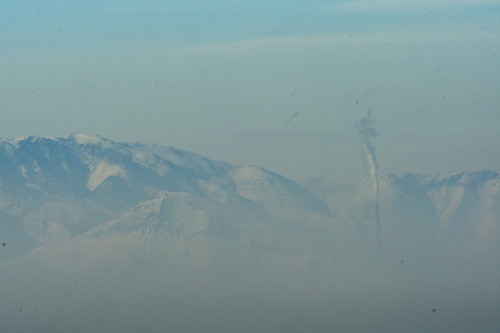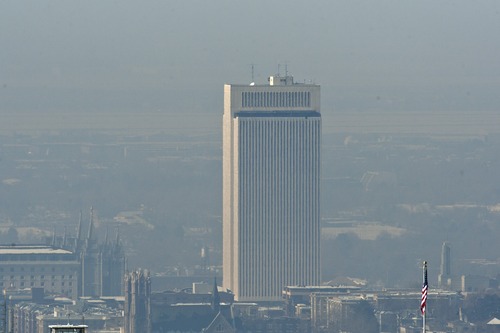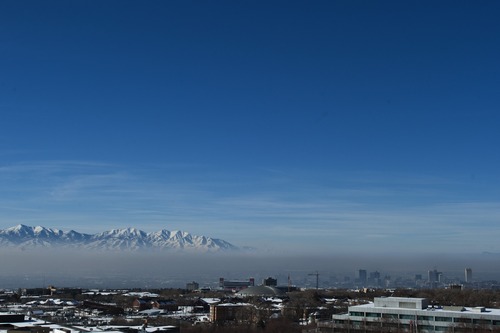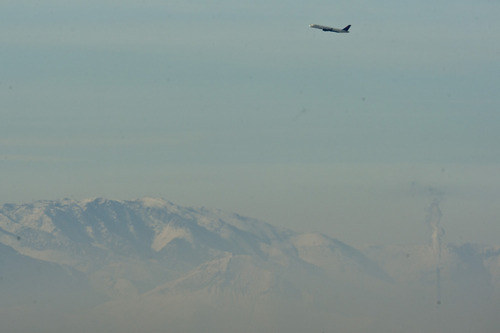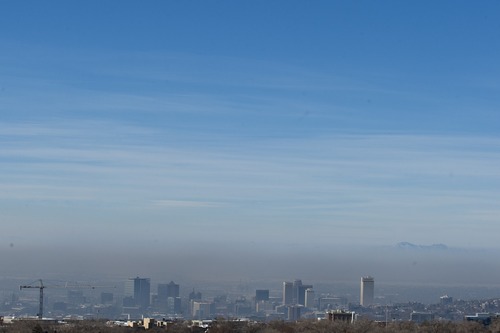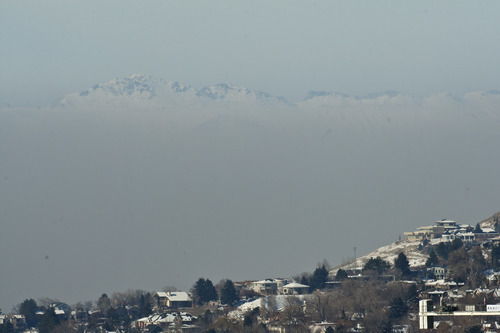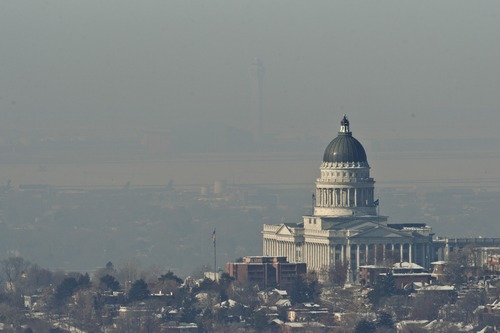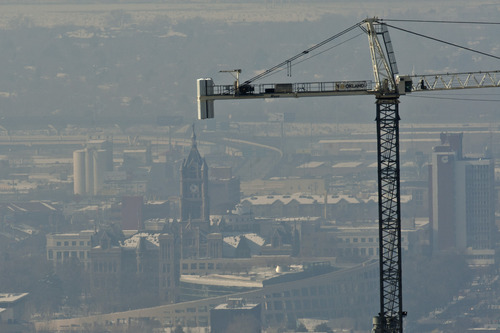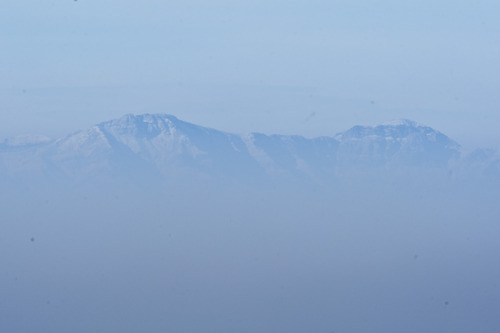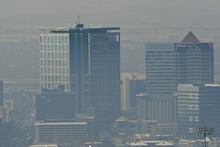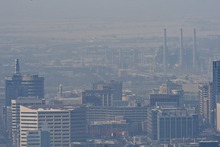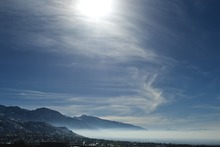This is an archived article that was published on sltrib.com in 2013, and information in the article may be outdated. It is provided only for personal research purposes and may not be reprinted.
Utahns have choice words for the ugly, unhealthy clouds that periodically shroud its valleys in winter — like the one we can expect to endure through Thursday.
Weather forecasters often call it "haze." Some people dub it "smog" or "inversion" episodes. Gov. Gary Herbert called it "gunky." Because of the harm it does to health, it also could be called "toxic" or "poisonous."
In some ways, it seems there is no right word for what residents and visitors to northern Utah experience when their senses are greeted on the high-pollution days with air that makes their eyes, nostrils and throats sting and that makes the most vulnerable among us suffer more asthma, heart attacks and many other health problems.
It's just such a period that much of northern Utah has endured since after Christmas, when snow had settled on the ground, temperatures plummeted and pollution began to build up under the high-pressure system that set up camp over the Mountain West.
Since then, the Wasatch Front has been the bull's-eye on the national map of high pollution, with levels exceeding federal air quality standards for nearly a week. And, while weather forecasters predict a snowstorm will hustle the pollution out of the valleys late Thursday, chances are good for another inversion — and the pollution buildup that comes with it — before the season ends in mid-February.
Technically speaking, the right word for the episodes is "PM 2.5," particulate matter 2.5 microns in diameter or less, or roughly 1/40th of the width of a human hair. That's what air-quality scientists call the microscopic soot left over from combustion, whether it be from heating stoves, vehicles or industrial engines.
But for the Wasatch Front the problem is not just fine soot. In its analysis of pollution winter episodes here, Division of Air Quality scientists have learned two other pollutants, oxides of nitrogen and volatile organic compounds mix with the soot to create even more PM 2.5 pollution.
Even short-term periods when PM 2.5 pollution levels are high have been linked to increased death from heart and lung trouble, plus health threats that include more heart attacks, stroke and emergency room visits. In addition, these pollution spikes mean higher infant mortality, more hospital visits for children with asthma, less success for in vitro fertilization patients and even lung inflammation among healthy, young adults.
Weather and geography are still other key factors. Winter high-pressure systems put a kind of warm lid on the valleys, like plastic wrap on bowls, especially when snow blankets the ground. So pollution gets sealed in along with the cold air on the valley floors until the atmospheric layers mix and stormy weather blows away the rotten air.
The American Lung Association has given six Utah counties — Utah, Salt Lake, Davis, Weber, Box Elder and Cache — failing grades because of the winter pollution spikes.
State regulators have been working on plans for ending these spikes. Their solutions include everything from cleaner cars that Utahns are expected to buy as a matter of course, to emissions-capture technology for auto-body shops, lower solvent emissions, phasing out of furnace pilot lights and restrictions on restaurant grills. But they need more solutions to accomplish their goals.
And that means Utahns will continue the debate about what to call the pollution.
"I don't know that anyone has a monopoly on the terms," said Brian Moench, a Salt Lake City anesthesiologist and co-founder of Utah Physicians for a Healthy Environment.
He's fine with using the term "smog," a word traditionally tied to summertime ozone pollution. To him, "haze" sterilizes the issue.
Brock LeBaron, deputy director of the Utah Division of Air Quality, can see an argument for using smog — a contraction of "smoke" and "fog" — to talk about the winter pollution problem here, even though its definition among air pollution experts limits it to urban summer ozone pollution.
And "haze" is roughly accurate, though it also misses the mark on technical grounds, since meteorologists use it to talk about scattering light.
His conclusion? "I just use 'air pollution.'"
Karen Hevel-Mingo, executive director of the health-advocacy group Breathe Utah, said she has no trouble with using the term "inversion" even though, in strict terms, it refers to the weather conditions that allow pollution to puddle. She agrees, though, that visitors and Utah newcomers might be missing key health information.
"It's difficult to capture all of that in one word," she said.
Twitter: @judyfutah —
What's the best way to describe Utah's winter pollution problem?
Do you call it:
Haze?
Inversion?
Smog?
Something else?


